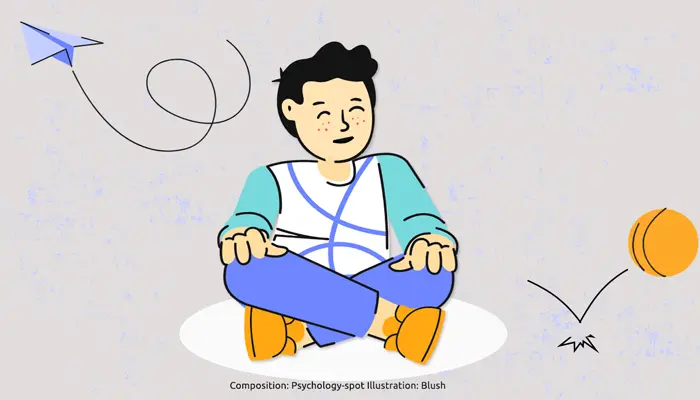
Anxiety and stress are not exclusive experiences of adults. All children feel nervous from time to time. And because they cannot express this discomfort in words, they often become irritated, angry, or have tantrums. When they lose control, it’s not pleasant – neither for them nor for you.
However, probably one of the worst things you can say to them – and also one of the most common – is: “Calm down!”
Anxiety doesn’t have an On/Off button
If you’ve ever felt very anxious, chances are someone has also told you to calm down. In fact, it’s what approximately 80% of people do, according to research conducted at Harvard Business School.
However, anxiety does not have an on and off button. So no matter how much you have been advised to calm down, it is likely that you have not succeeded. You may have repressed the expression of your symptoms, but anxiety was still bubbling inside you.
“Reducing feelings of anxiety is difficult because we experience a high automatic level of arousal,” as indicated by these psychologists, who also noted that “Trying to suppress or hide anxiety is often an ineffective strategy.”
If managing an emotion like anxiety is a complex task for adults, imagine for children.
For this reason, when we tell to anxious children to calm down, we are not validating their emotions or helping them understand that emotional experience. In fact, it may actually seem like we’re downplaying their feelings, even though that’s not our goal.
Don’t ask them to calm down, teach them to breathe
As parents, we need to remember that anxiety is an intense emotion that creates a heightened state of physiological arousal, so it doesn’t just go away. Therefore, asking them to calm down will not help.
Telling a child “Calm down” is like saying “Behave yourself.” It is a good recommendation, but without a roadmap.
What can we do instead?
Ask them to breathe.
Do a controlled breathing exercise. This is how you show them the path and accompany them along it while validating their emotions. If you start synchronizing your breathing with your child’s, you will create a very powerful connection space that will even help you address those emotions subconsciously.
And this strategy works for adults too.
Just as anxiety is contagious, calm is also transmitted. The secret to the effectiveness of breathing exercises is that they trigger a cascade of physiological changes that actually induce a state of calm and serenity.
Breathing slowly and deeply stops the activation of the sympathetic nervous system, which is a kind of accelerator of stress and anxiety, while activating the parasympathetic system, which is the natural brake to enter recovery and relaxation mode.
Breathing consciously (with a 10-second inhalation/exhalation cycle) synchronizes physiological processes. This means that the heartbeat is in rhythm with breathing and, when it returns to normal, it sends a signal to the brain to indicate that everything is under control.
In fact, conscious breathing reduces the activity of the amygdala while activating the dorsomedial prefrontal cortex, which acts as a kind of “switch” between the emotional and rational brain, to give us control of the situation, according to neuroscientists from the Technical University from Munich.
On the other hand, when the child or person focuses on breathing, their focus changes from the problem that caused them anxiety.
References:
Doll, A. et. Al. (2016) Mindful attention to breath regulates emotions via increased amygdala-prefrontal cortex connectivity. Neuroimage; 134: 305-313.
Brooks, A.W. (2014) Get Excited: Reappraising Pre-Performance Anxiety as Excitement. Journal of Experimental Psychology; 143(3): 1144–1158.




Leave a Reply